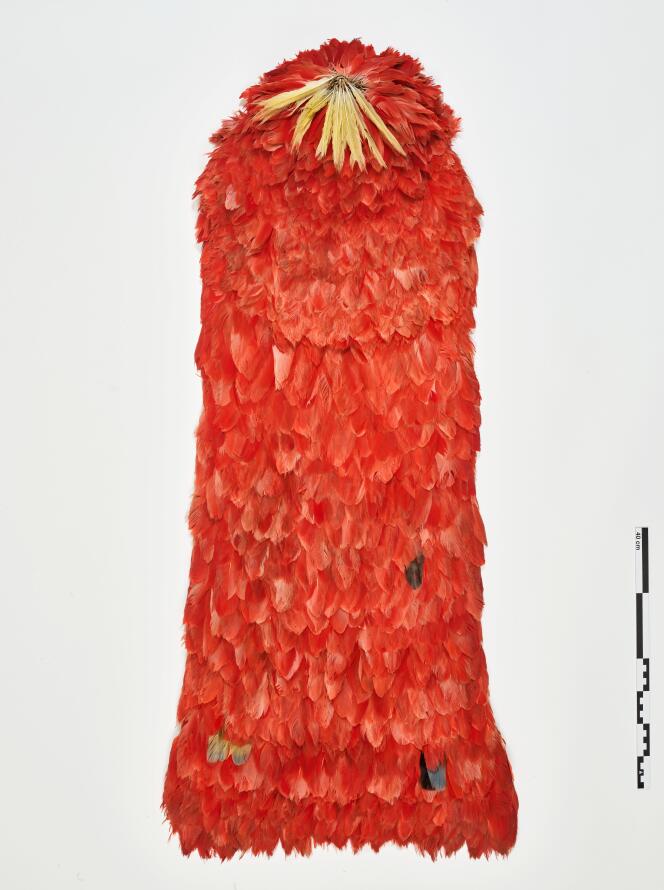

LETTER FROM SAO PAULO

There are only 11 of them on the planet, and each one is a priceless treasure. Tupinamba coats, made entirely of reddish feathers, are considered to be among the most precious artifacts ever produced by the native peoples of the Americas. As an unprecedented goodwill gesture, in 2024, one of them will leave the National Museum of Denmark's collections to cross the Atlantic and be returned to Brazil.
Measuring one meter, 20 centimeters high, woven from natural fibers and covered with thousands of red ibis feathers, this ruby-toned jewel is remarkably well preserved. "No mineral, no fossil, no artifact in the world can rival this coat. Quite simply, it is the most important Brazilian ethnographic piece kept abroad!" said Alexander Kellner, a paleontologist and the director of the National Museum of Rio de Janeiro, where the precious ornament will now be on display.
Worn during traditional and sacred rituals, Tupinamba cloaks have long captured Europeans' imagination. Bought, bartered or simply stolen from the natives, they were all the rage at royal courts, depicted in engravings, canvases, tapestries and frescoes, such as on the ceiling of the Versailles Palace's Salon d'Apollon, painted by Charles de la Fosse in the 17th century. Only 11 of these fragile ornaments have officially survived. But none are on display in Brazil.
The "Copenhagen coat" had been kept in Denmark since 1689. "For us, its restitution is both a painful and exciting process," said Christian Sune Pedersen, a researcher and the director of the National Museum's collections. "Painful because this coat was dear to the hearts of the Danes and exciting because we understood its immense importance for the Indigenous peoples of Brazil. We're convinced we made the right decision!"
Negotiated for years by Brazilian diplomats, its restitution owes much first and foremost to the advocacy of the Tupinamba, particularly those living around the town of Olivença, in the south of the state of Bahia. Wiped out by Portuguese settlers, the Tupinamba have been fighting for two decades to have their rights to their traditional land – 47,000 hectares (4.5 times the size of Paris), home to 4,600 inhabitants along the Atlantic coast – approved and recognized by the government.
For the Tupinamba, the quest for a land and for the coat went hand in hand. The impetus came from a colorful personality named Glicéria Tupinamba, a 41-year-old native of the Olivença region. This artist, activist and researcher set out to resume weaving the ritual apparel. Since 2006, she has successfully made three of them, one of which was exhibited for several months this year at the Casa do Povo ("People's House"), a major cultural institution in Sao Paulo, in partnership with the Museum of Contemporary Art (MAC USP).
You have 50% of this article left to read. The rest is for subscribers only.
